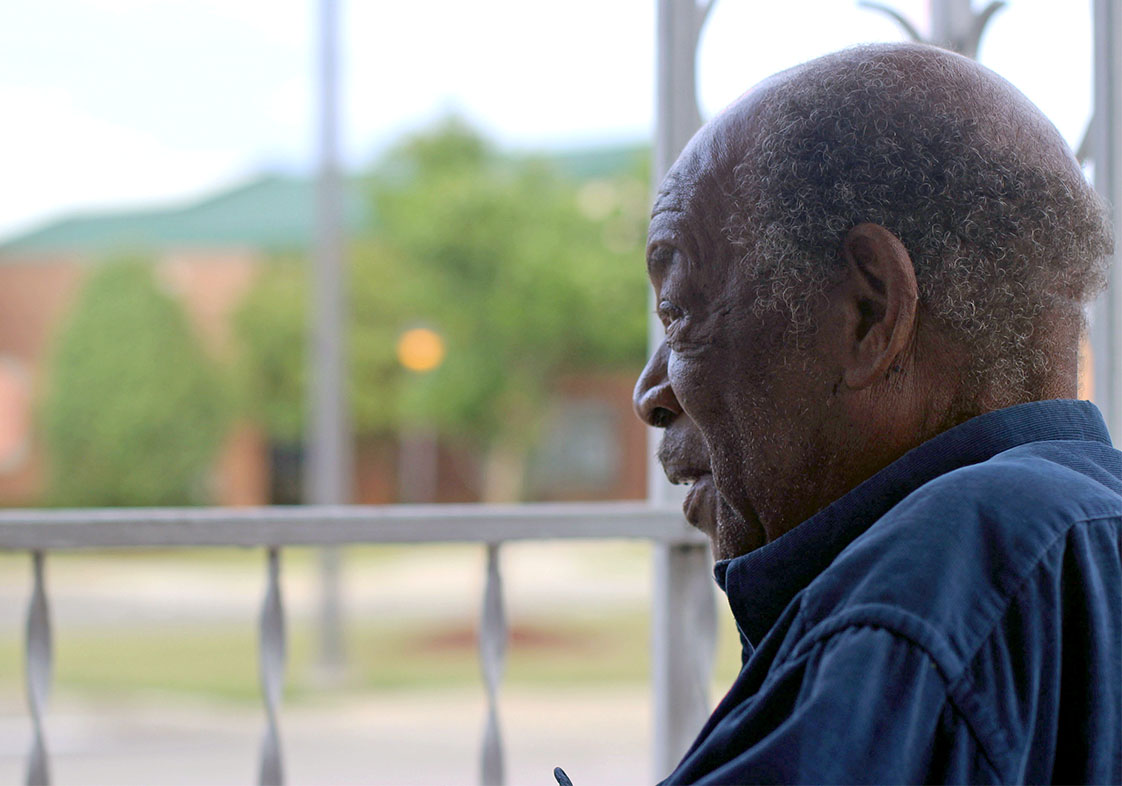
Long-time NECD resident William Thomas said he believes the key to combating crime in the community is to let the voices of citizens be heard. (Staff photo by Evan Owens)
Long-time Northeast Central Durham residents have no trouble recalling a time in the ’90s when their community was at a crossroads.
“Things were out of control,” William Thomas, 72, of Taylor Street remembers. “There was drug dealing and a lot of undesirable actions.”
Thomas said that he and other community members knew that it was time for positive change, and that it would have to start with citizens of NECD.
“Community people got sick and tired of being sick and tired,” Thomas explained. “We came together to let the leading bunch know that good people wanted to get the bad people out.”
The passion of community members became action, and they became some of the first participants in Durham Police Department’s Partners Against Crime program (PAC).
The program is a collaboration of police officers, Durham residents, and government officials. Each of the five districts of Durham has its own PAC organization which holds monthly meetings to discuss community issues. NECD is part of PAC1.
Each PAC organization aims to find sustainable solutions to community crime problems and quality of life issues, according to the program’s webpage.
Thomas served as the program’s co-facilitator in 1996.
Thomas said he thinks the best way for the PAC to find solutions is to listen to the members of the community.
“The PAC was supposed to be the voice of the community,” he said.
Carolyn Rogers, 62, of Durham agrees.
Rogers, a community activist, NCCU alumnus, and former co-facilitator of PAC1, said there’s not much going on in NECD that would be news to her.
“I was born and raised in Durham,” she said. “We started the PAC because of the increase of violence and illegal activities in Northeast Central Durham.”
Rogers, like Thomas, said she believes the most valuable asset to NECD is its residents.
“As a community, we should police our own area,” she said. “It’s not about the police department; it’s not about the city council; it’s not about the county commissioners; it’s about what we need to do as neighbors.”
Rogers has a few changes for the organization in mind. She said she would like to see PAC1 narrow the organization’s focus.
“We’ve branched out to so many different areas, but we need to come back to our principles,” she said. “I would love to see more policing issues, more preventative measures to avoid what’s going on now when it comes to violent crime, when it comes to homelessness, and poverty.”
Although Rogers would like to see changes to PAC1, she remains optimistic about the organization’s future and encourages community members to get involved.
“As neighbors, there’s ways we can battle these issues, ways we can all contribute to our community,” Rogers explained.
William Thomas, too, recognizes the strides that have been made, since the formation of PAC1.
“Good things are happening, and it’s working,” he said. “People take more interest in their community, more pride.”
And it seems their optimism is justified.
According to citydata.com, Durham experienced a decrease of 1,802 reported cases of theft per year from 2001 to 2012. There were 615 reported robberies in 2012, compared to 980 in 2001.
PAC1 meets every third Saturday of the month at 9:30 a.m. at the Holton Center on Driver Street in NECD.
One thought on “PAC1: Evolving over the years”
Comments are closed.